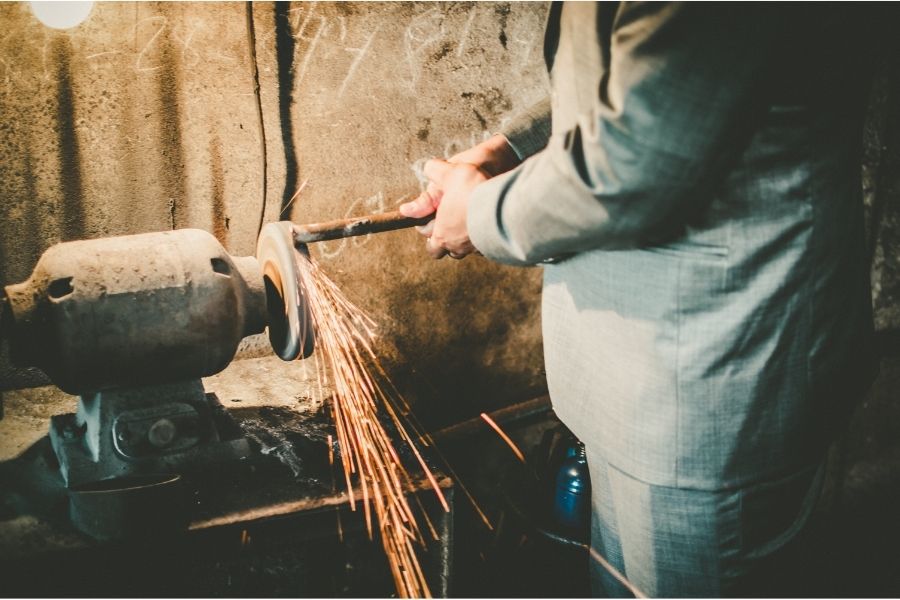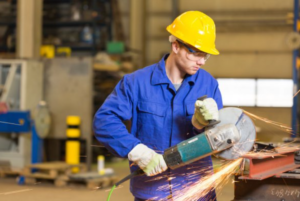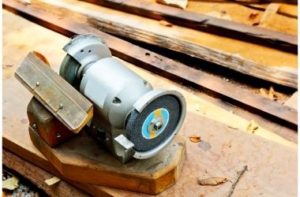
If you’re tossing up between reciprocating saws and grinders, you probably have a particular job in mind. They are both useful demolition tools that can carve up a lot of structures.
Generally, when you’re after a reciprocating saws (also known sawzalls) and grinders, both bench and angle, you’re doing so as they’re great when cutting through metal. So much so that there can be some confusion over which tool would be best for this task.
From what I’ve read in forums, most DIYer’s see both the angle grinder and reciprocating saw about equal when it comes to metal, but there are some important differences between the tools which affect how you might use them. It’s definitely worthwhile knowing what these differences are before you fork out your hard earned money and purchase either one.
What is a Reciprocating Saw and Do I really Need One?
A reciprocating saw is a power tool with saw like teeth that you’ll need two hands to use.
It has an end-mounted bladed which moves back and forth in a fast, reciprocating motion. It’s powerful and can cut through wood and thin metal objects with relative east. It’s perfect when you need to work in tight spaces.
The saw makes rough cuts so it’s not best for delicate or fine detailed work, like you would use a jigsaw on.
Do you really need one? Well that all depends on the type of job you plan on doing and what other tools you already have that may be able to do the same job. The biggest advantage to the reciprocating saw is the extended outward blade that allows you to slot into enclosed spaces, such as doors and window frames. Therefore, if you’re doing those sort of jobs, this would be the saw for you.
What is an Angle Grinder and Do I Really Need One?
Unlike a reciprocating saw, an angle grinder cuts material via a disc that is essentially a cutting-style blade. The shape and style of the blade is clearly different to the reciprocating saw.
Angle grinders can sometimes be referred to as disc grinders or side grinders. It’s a handheld tool used on both construction and demolition. It’s not used as much in DIY tasks (and if you need to use one for DIY, some just rent or borrow) and this will save you some money!
Do I really need one? Well, do you have some bolts that you can’t remove by hand? Or need to cut tile or rout out of mortar? Or something else equally as tough? Angle grinders are perfect for cutting through tough material like medium-gauge metal stock, including bolts. It’s worth noting that they can sand, polish and sharpen too (although I think bench grinders are better at large scale polishing jobs).
I’ve used one to remove loose paint before and a bit of rust. These days I use it to sharpen blades.
Angle grinders are great for the job that is too tricky for other power tools, like grinding steel. They’re also mobile (unlike bench grinders).
What is a Bench Grinder and Do I really Need One?
A bench grinder is another power tool that is mounted and has wheels you use for grinding. It is great for when you need to sharpen other tools or even for shaping objects. It literally spins grindstones and you can use this to reshape and polish your wood projects too.
Do I really need one? While a lot of sanders can do similar jobs, you’d be hard pressed to find a tool that can shape, sharpen, buff, polish or clean both wood and metal objects the same way a bench grinder can. This is because you can remove thick surface areas without too much hassle and it’s more cost effective than doing this job with a sanding disc or sand paper (just ensure you have the right buffing wheel attachment).
If you’re going to buy one, just make sure you choose one that is designed for the job you are doing and make sure the wheel is adjusted to the right speed setting (I’ve seen one explode once as the machine could not handle the wheel on a fast setting!)
Reciprocating Saws and Grinders - Our Directory

How to Use an Angle Grinder to Cut Metal
As an enthusiastic DIYer, there are times you ponder, ‘how to use an angle grinder to cut metal.’ This is especially true if you’re looking

What can you do with a bench grinder?
If you’re asking, what can you do with a bench grinder, you’ve come to the right place. Bench grinders are great for anyone into DIY

The Best Sawzall For the Money
Finding the best sawzall for the money can be tricky as there are lots of variables. One thing I know for sure and that as